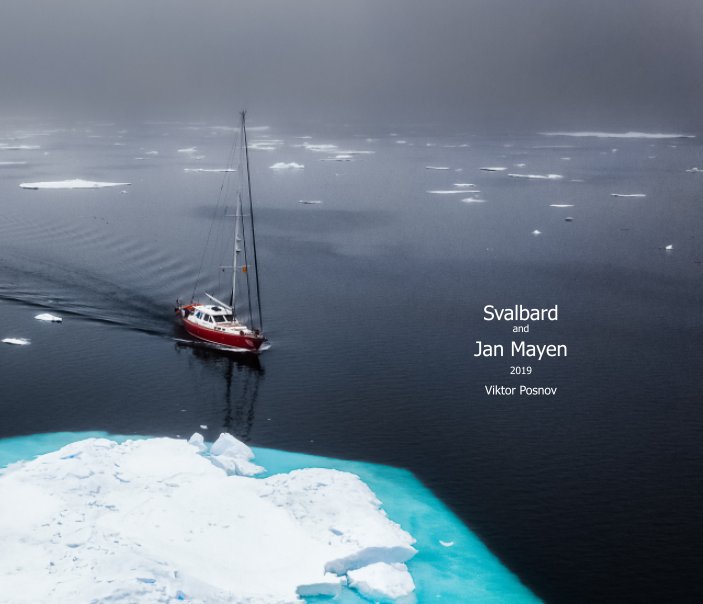About the Book
Sailing trip to Spitsbergen in July 2019.
We reached the 80th parallel north and went as far as Woodfjorden.
Later on, we sailed to East Greenland and stop by at Jan Mayen.
Jan Mayen is a very surreal place. We where joking that the island is glowing (let's pretend there is no polar days in July), because of a nuclear accident that happened on the soviet submarine K-19 in 1961 near it shores. As a proof the lush green moss and bare rocks were unbelievably colourful, probably radioactive.
The Island is the north-end of the middle Atlantic ridge dominated by the 2277 meter high Beerenberg volcano. We were only lucky enough to catch a glimpse as thick fog and heavy clouds where constantly rolling across the sky encircling the island. Clear days are very rare on Jan Mayen because of the huge contrast in temperatures between the sea and air. Also, the island’s location makes it a boundary between the Gulf Stream and East Greenland
The first thing you notice on the island is the diversity of birds. Jan Mayan is a true bird paradise. The arctic fox are extend on the island because of early hunting practices, while colonies of gulls, fulmars, puffins and other birds are doing really well. The sea ice from Greenland does not reach Jan Mayen anymore, so the last polar bear was seen on the island in 1991, also it has been many years since the walrus were gone.
There is no permanent residents on the Jan Mayen and 16 people were maintaining the Olonkinbyen Station at the moment when we were there, witch get there is by Norwegian military aviation. Before Norwegian government declared Jan Mayen a nature reserve in 2010, sheep were farmed on the island. Nowadays all farming and hunting activities are forbidden. Since the nature reserve was established, tourists are not allowed to go ashore or camp within the island (the exceptions are for Kvalrossbukta and Batvika areas near Olonkinbyen, where it is allowed to land only after gaining permission). That is why most of
We reached the 80th parallel north and went as far as Woodfjorden.
Later on, we sailed to East Greenland and stop by at Jan Mayen.
Jan Mayen is a very surreal place. We where joking that the island is glowing (let's pretend there is no polar days in July), because of a nuclear accident that happened on the soviet submarine K-19 in 1961 near it shores. As a proof the lush green moss and bare rocks were unbelievably colourful, probably radioactive.
The Island is the north-end of the middle Atlantic ridge dominated by the 2277 meter high Beerenberg volcano. We were only lucky enough to catch a glimpse as thick fog and heavy clouds where constantly rolling across the sky encircling the island. Clear days are very rare on Jan Mayen because of the huge contrast in temperatures between the sea and air. Also, the island’s location makes it a boundary between the Gulf Stream and East Greenland
The first thing you notice on the island is the diversity of birds. Jan Mayan is a true bird paradise. The arctic fox are extend on the island because of early hunting practices, while colonies of gulls, fulmars, puffins and other birds are doing really well. The sea ice from Greenland does not reach Jan Mayen anymore, so the last polar bear was seen on the island in 1991, also it has been many years since the walrus were gone.
There is no permanent residents on the Jan Mayen and 16 people were maintaining the Olonkinbyen Station at the moment when we were there, witch get there is by Norwegian military aviation. Before Norwegian government declared Jan Mayen a nature reserve in 2010, sheep were farmed on the island. Nowadays all farming and hunting activities are forbidden. Since the nature reserve was established, tourists are not allowed to go ashore or camp within the island (the exceptions are for Kvalrossbukta and Batvika areas near Olonkinbyen, where it is allowed to land only after gaining permission). That is why most of
Author website
See More


